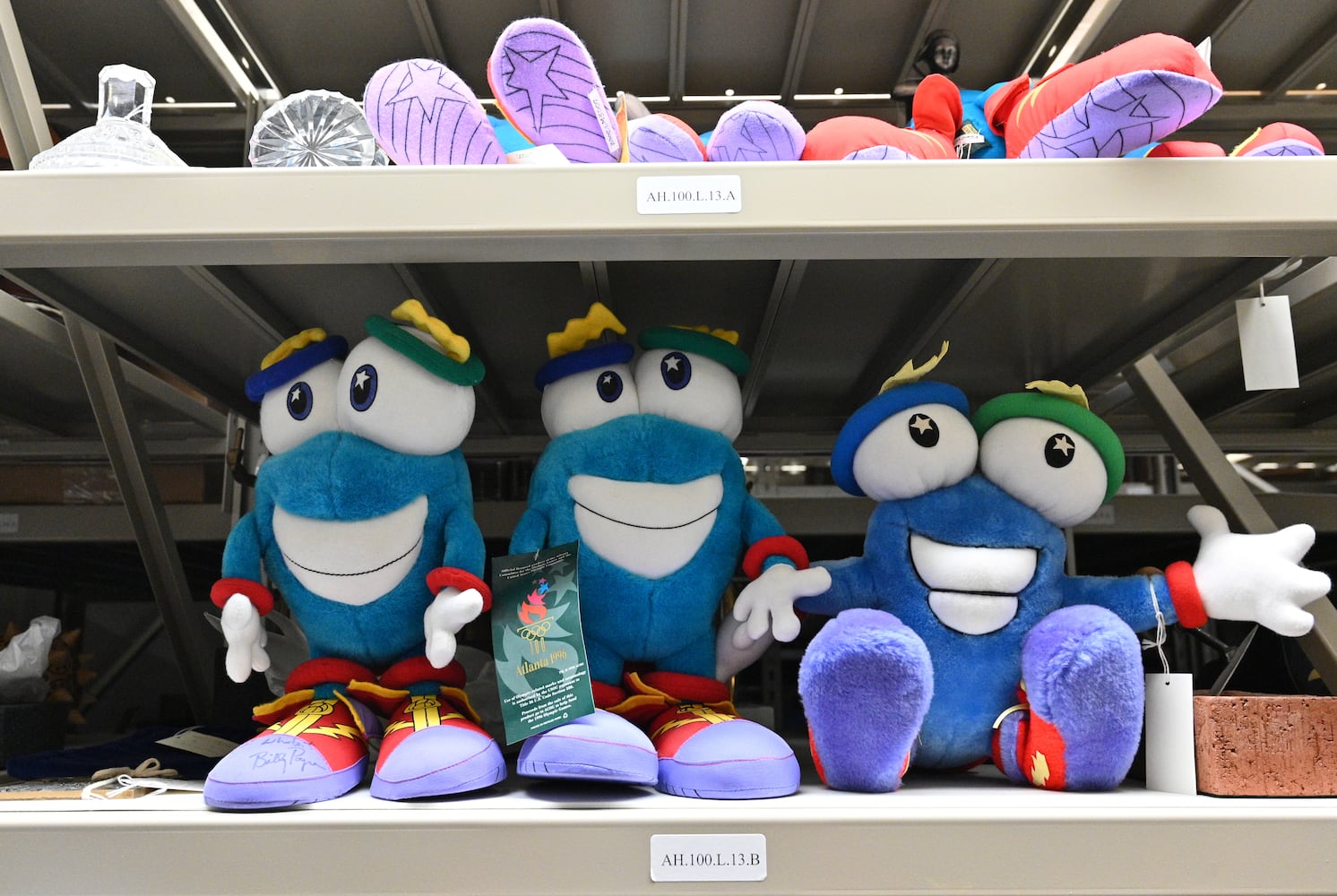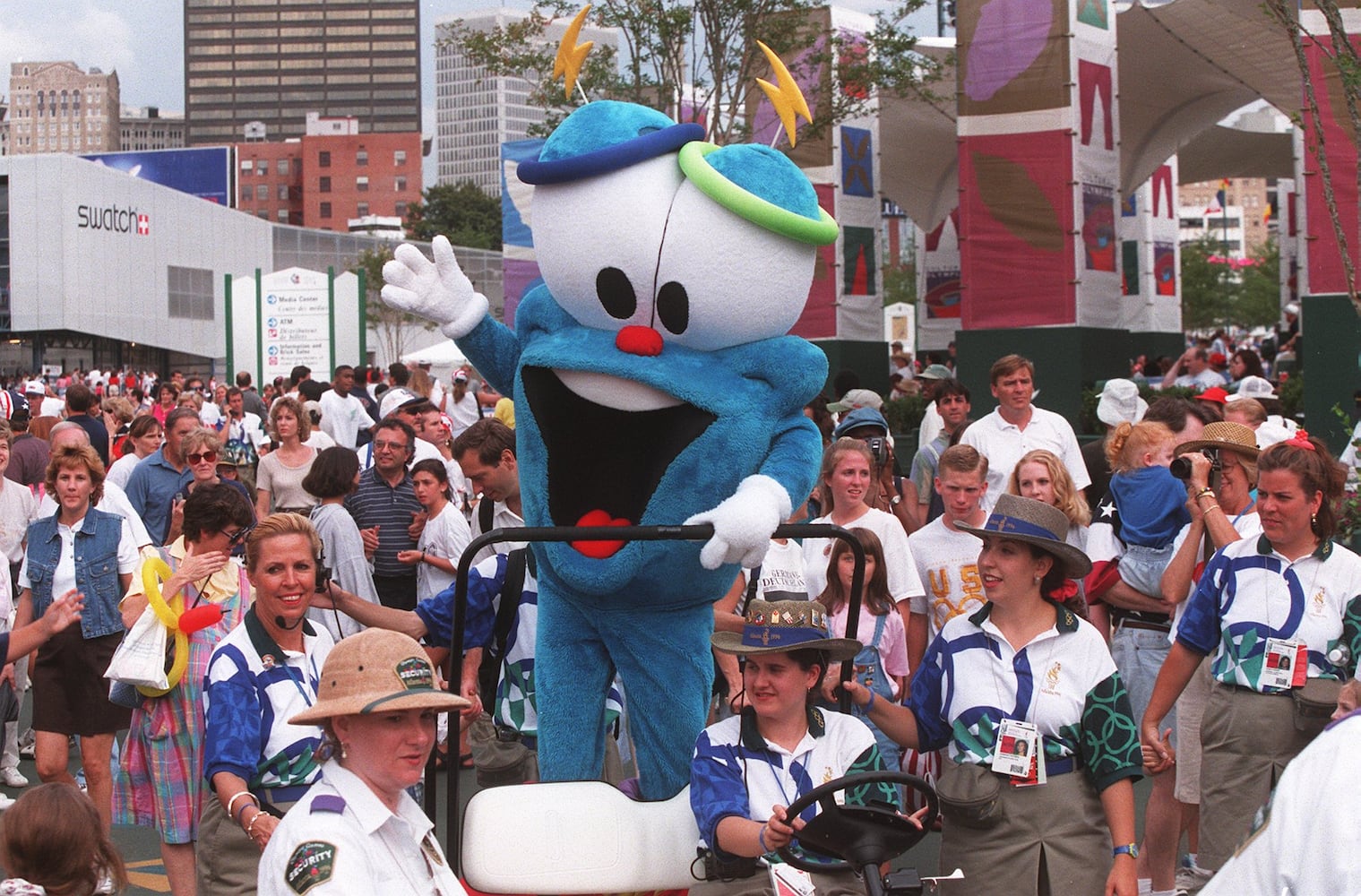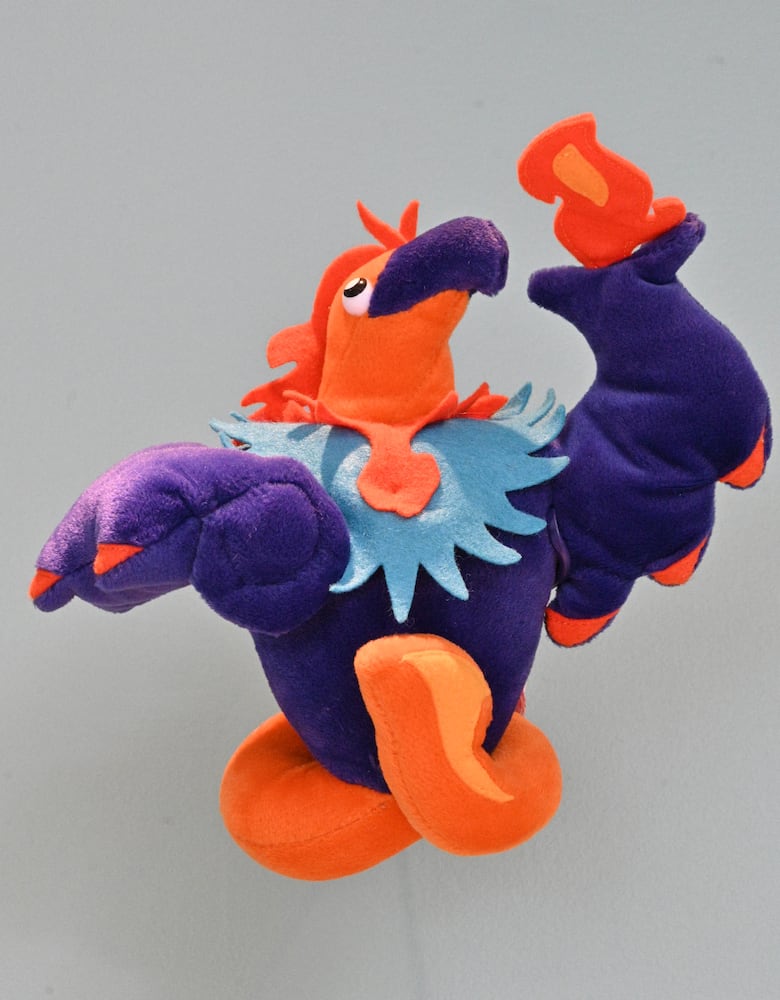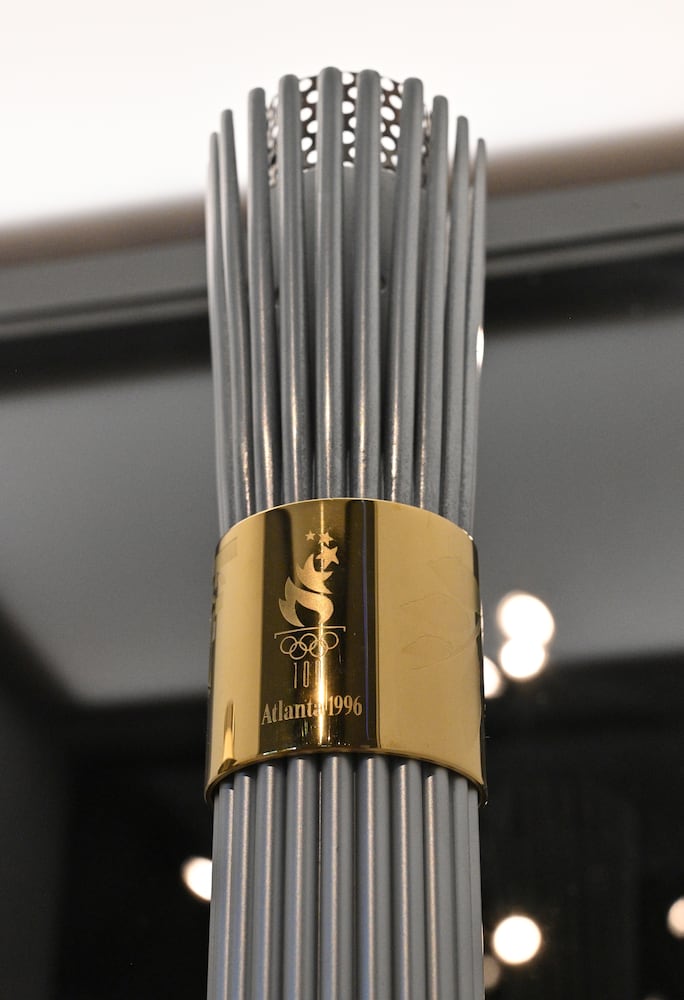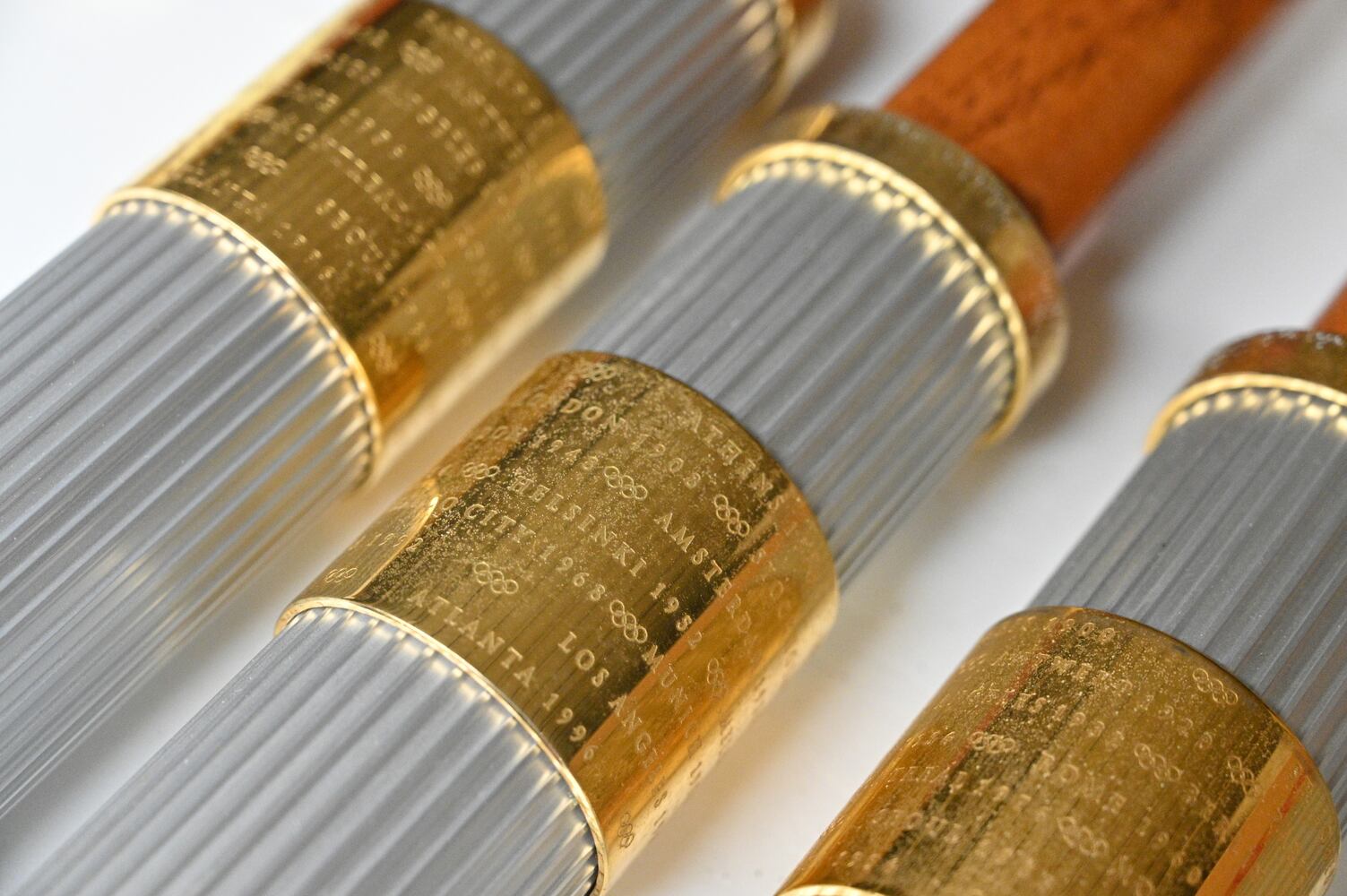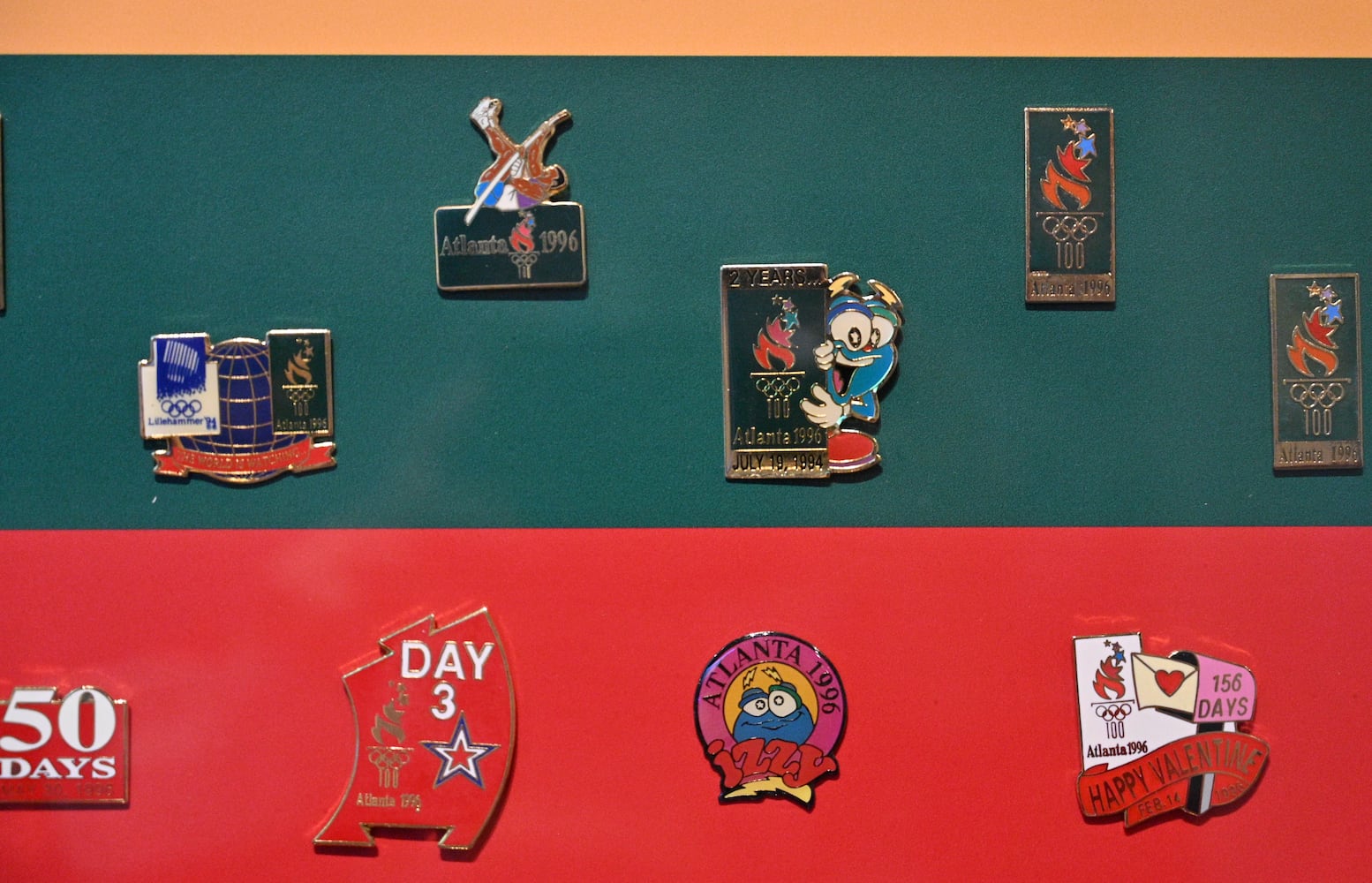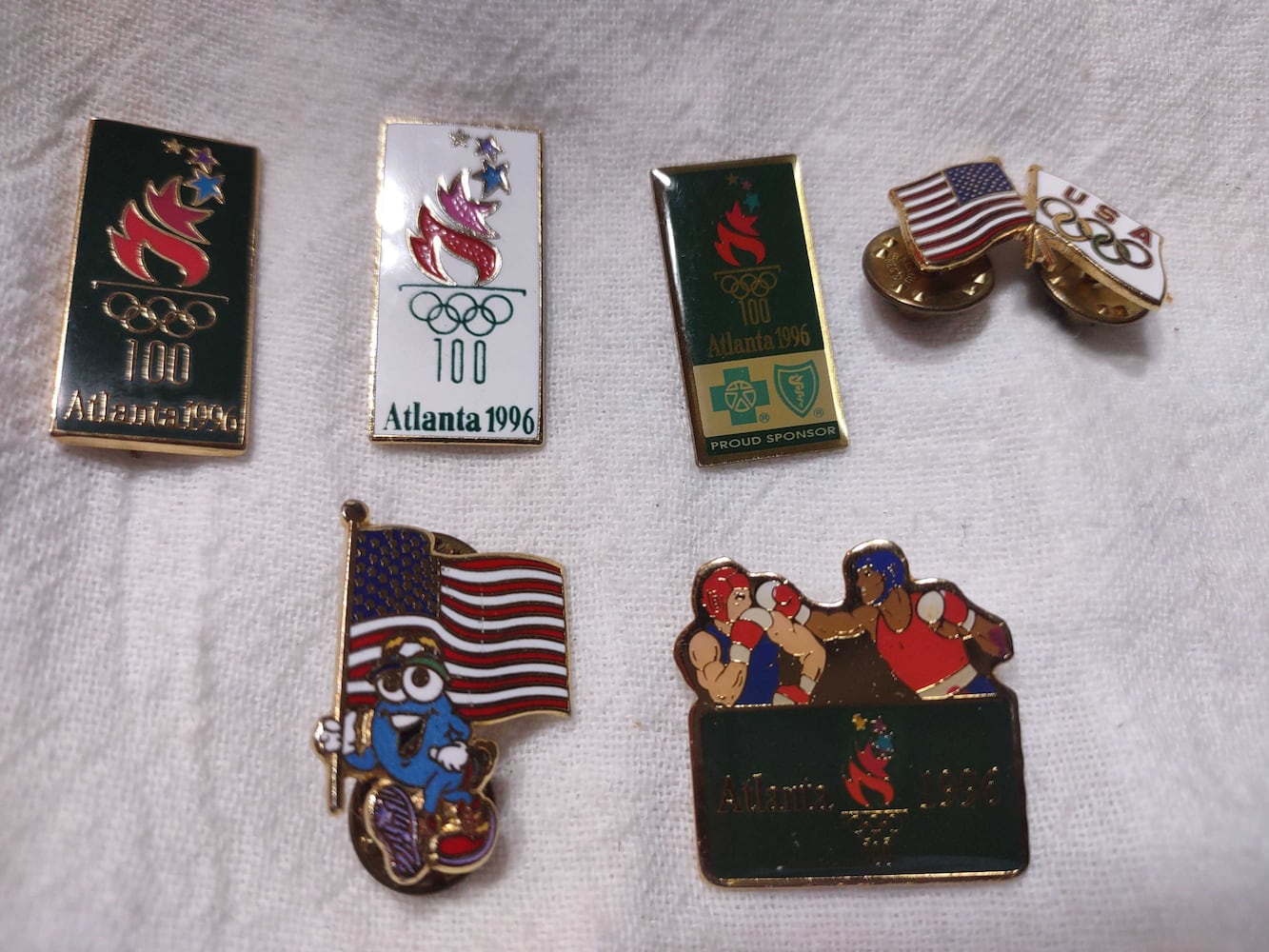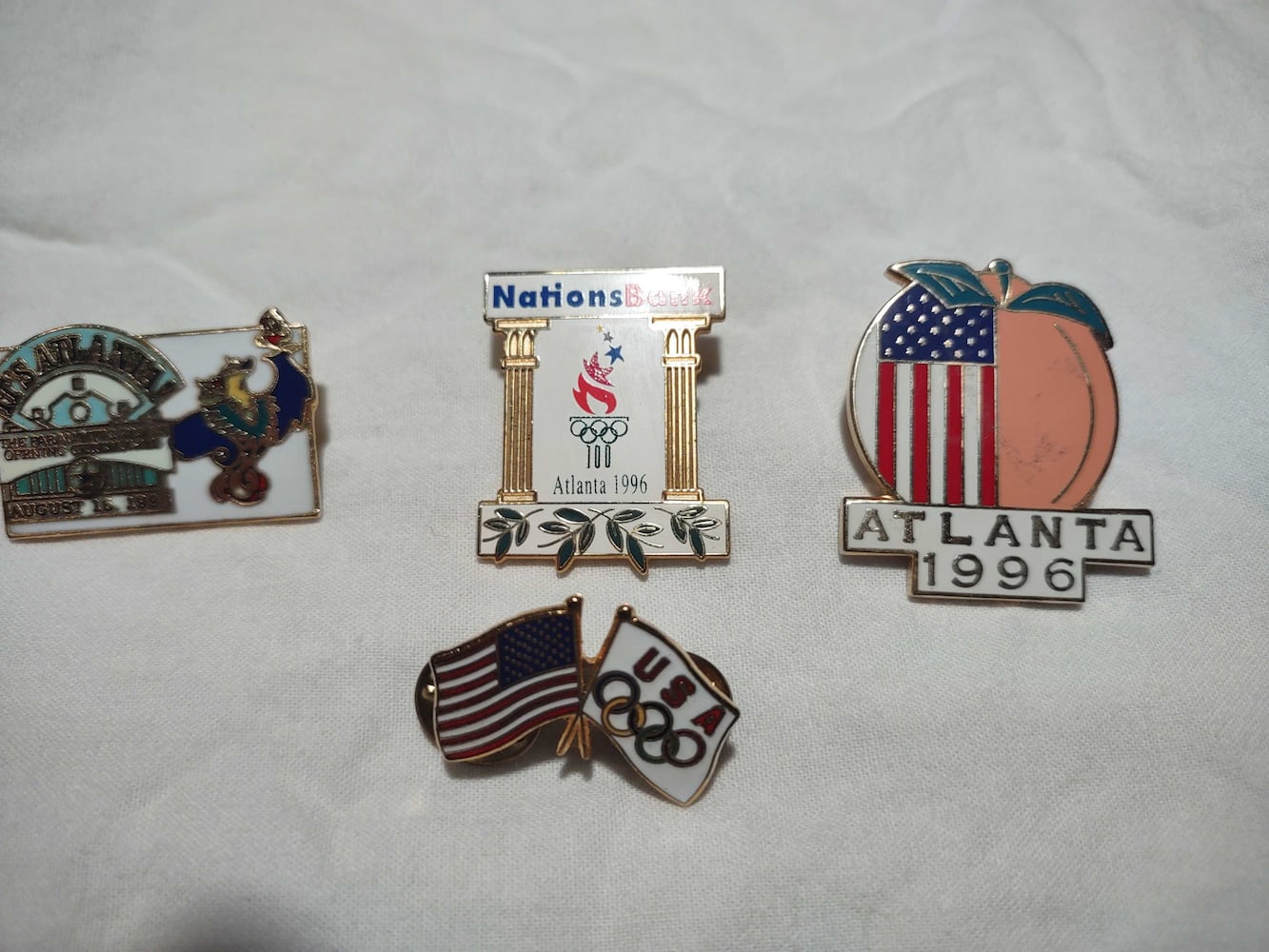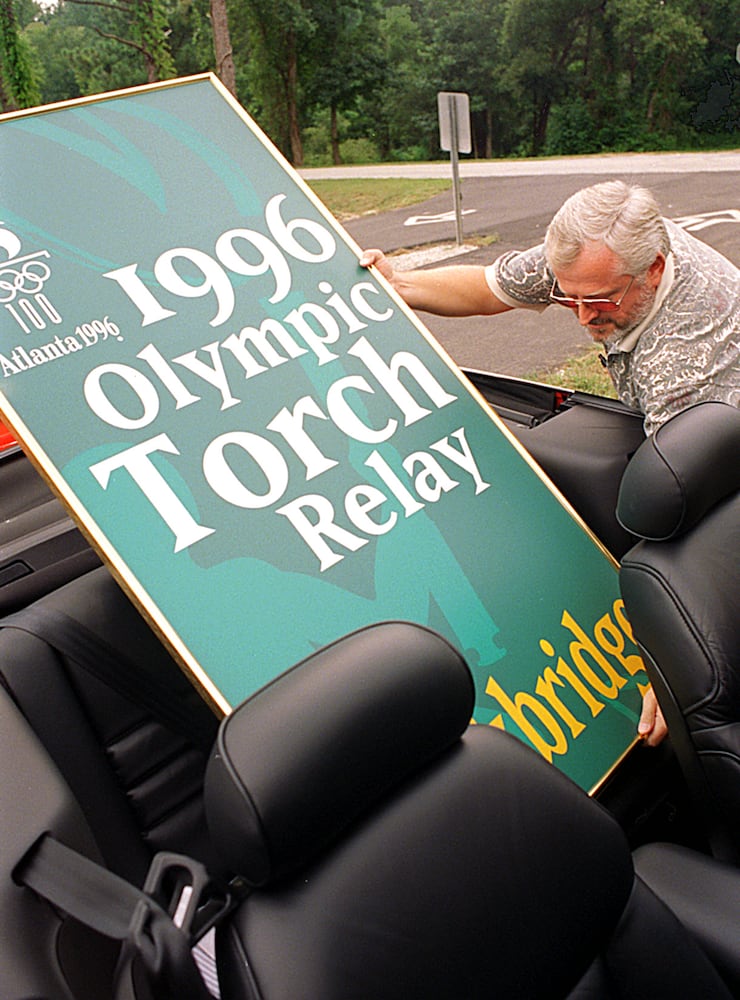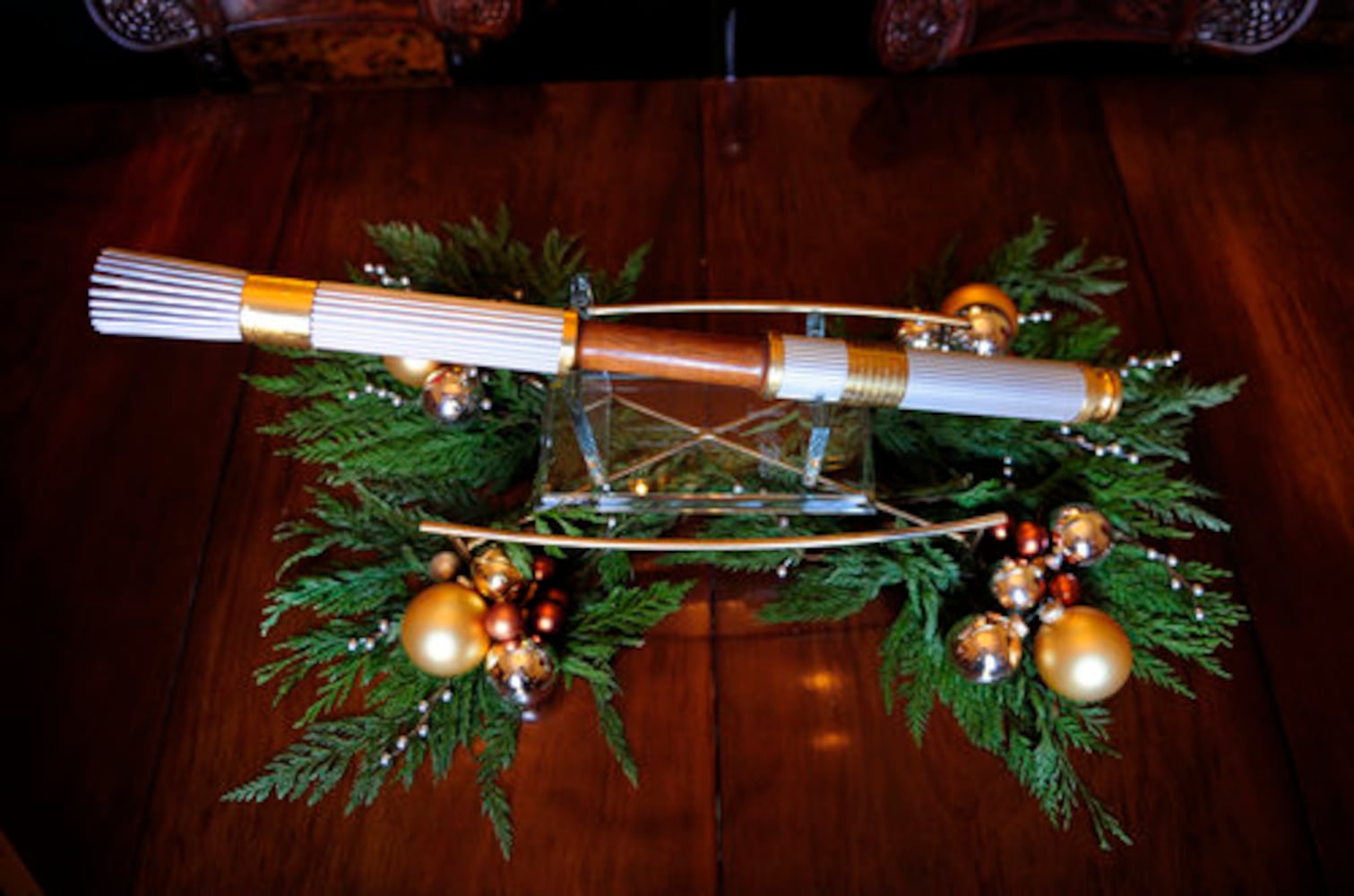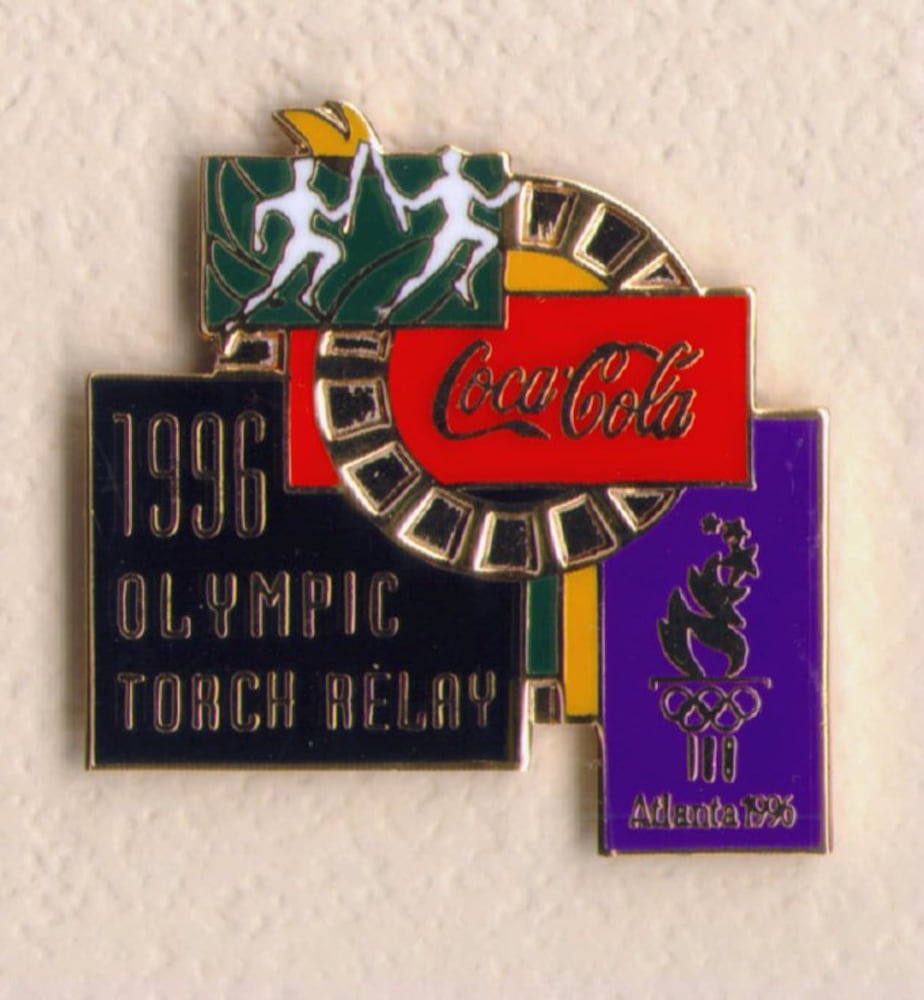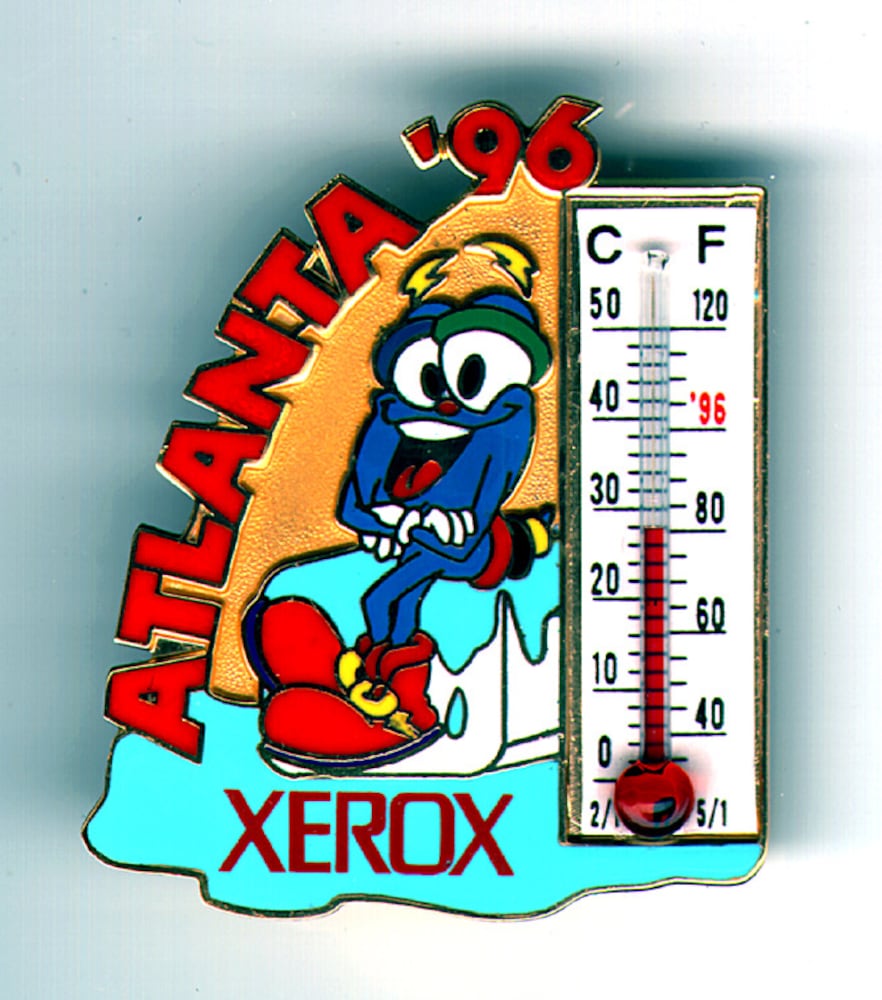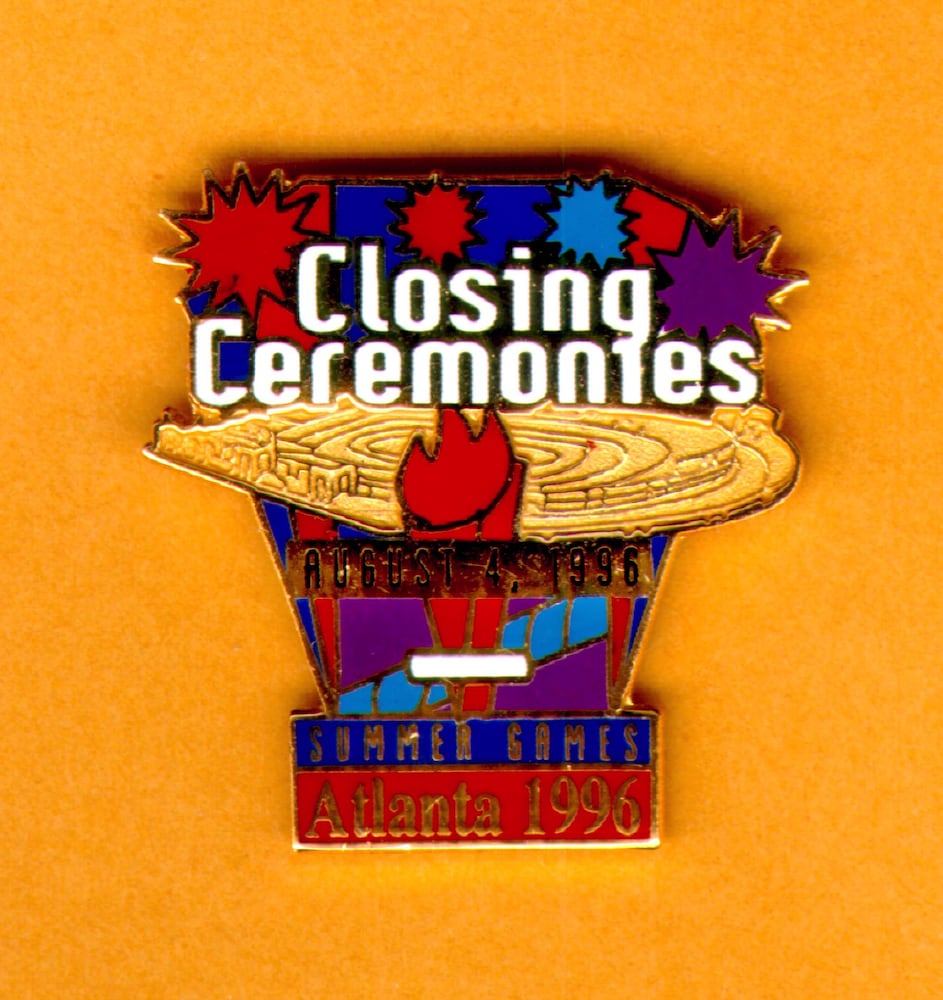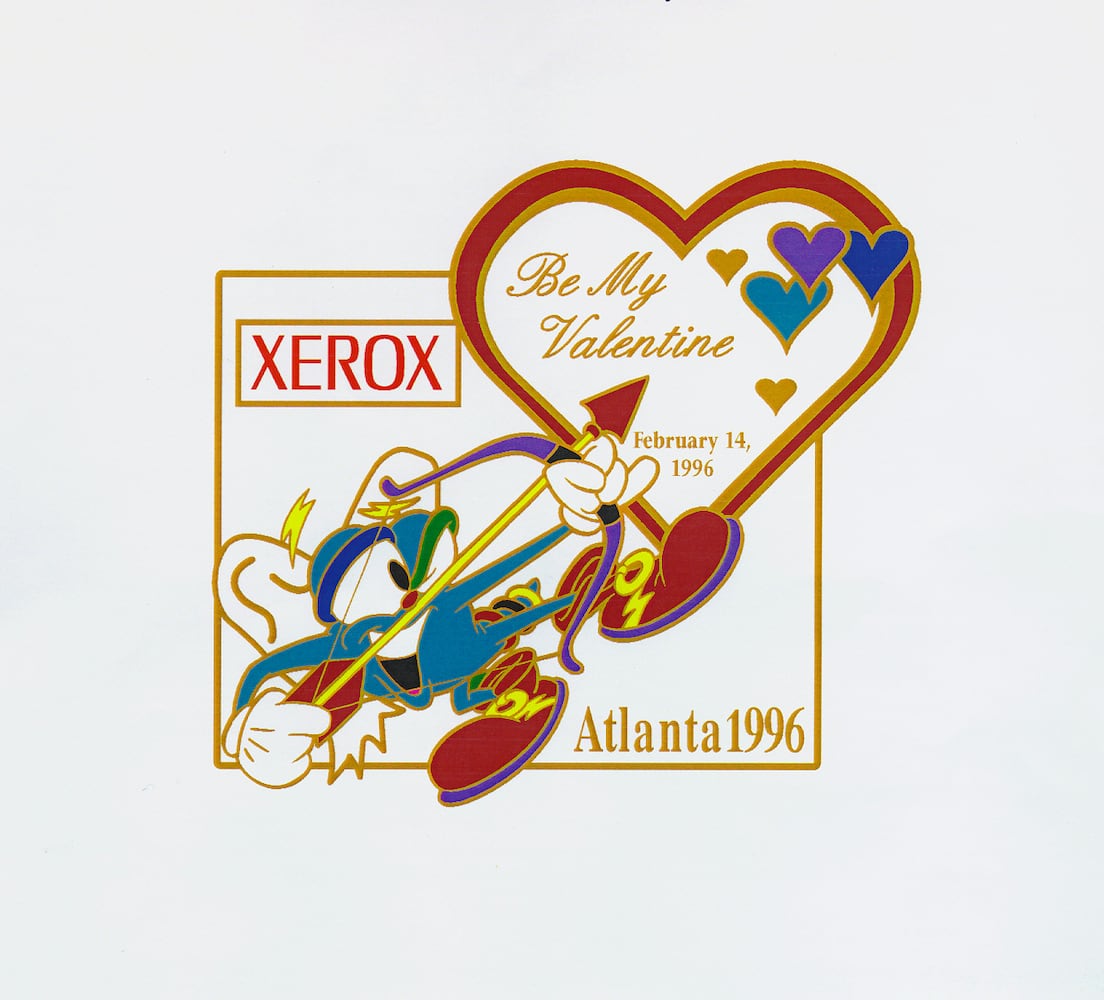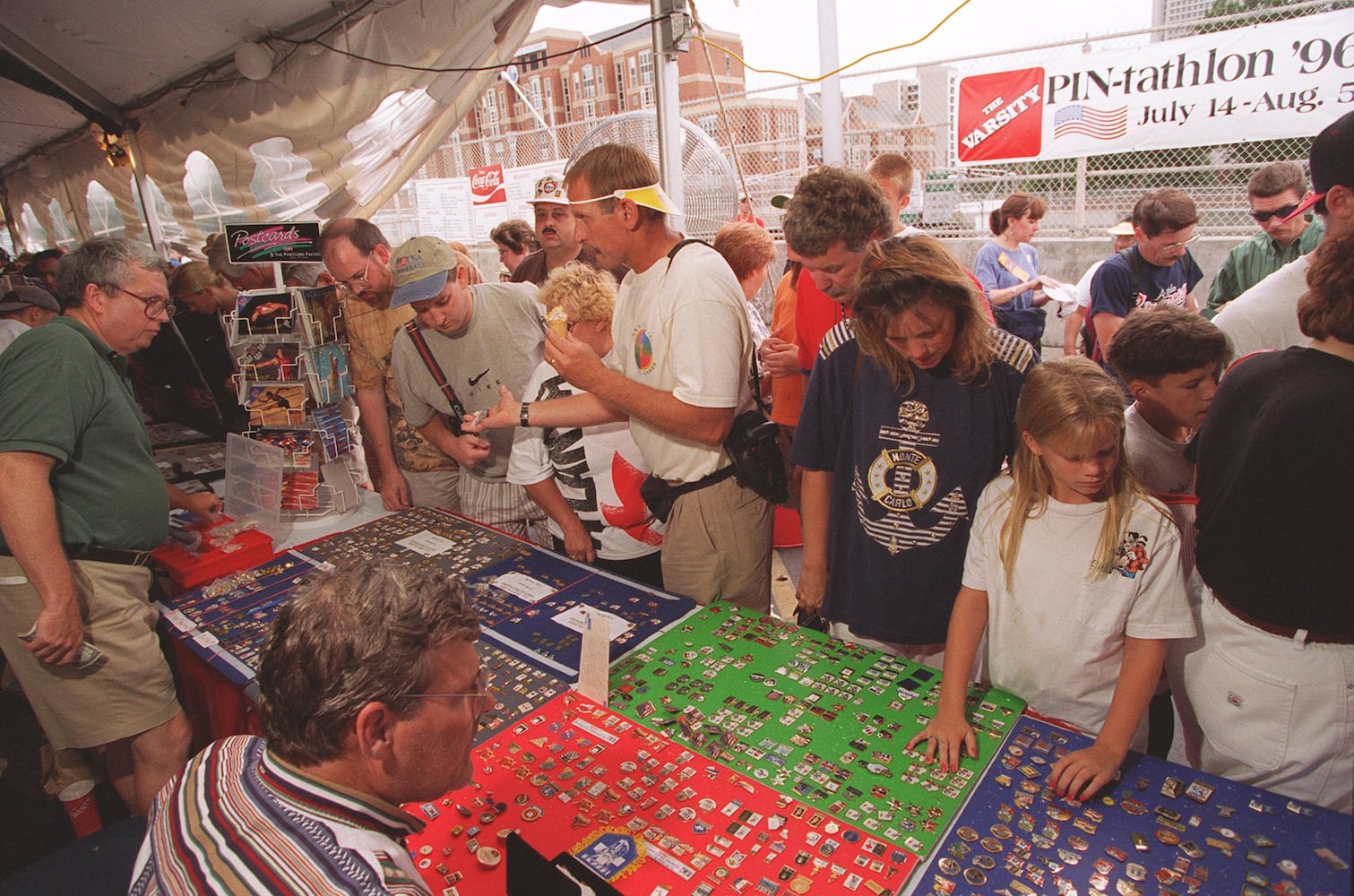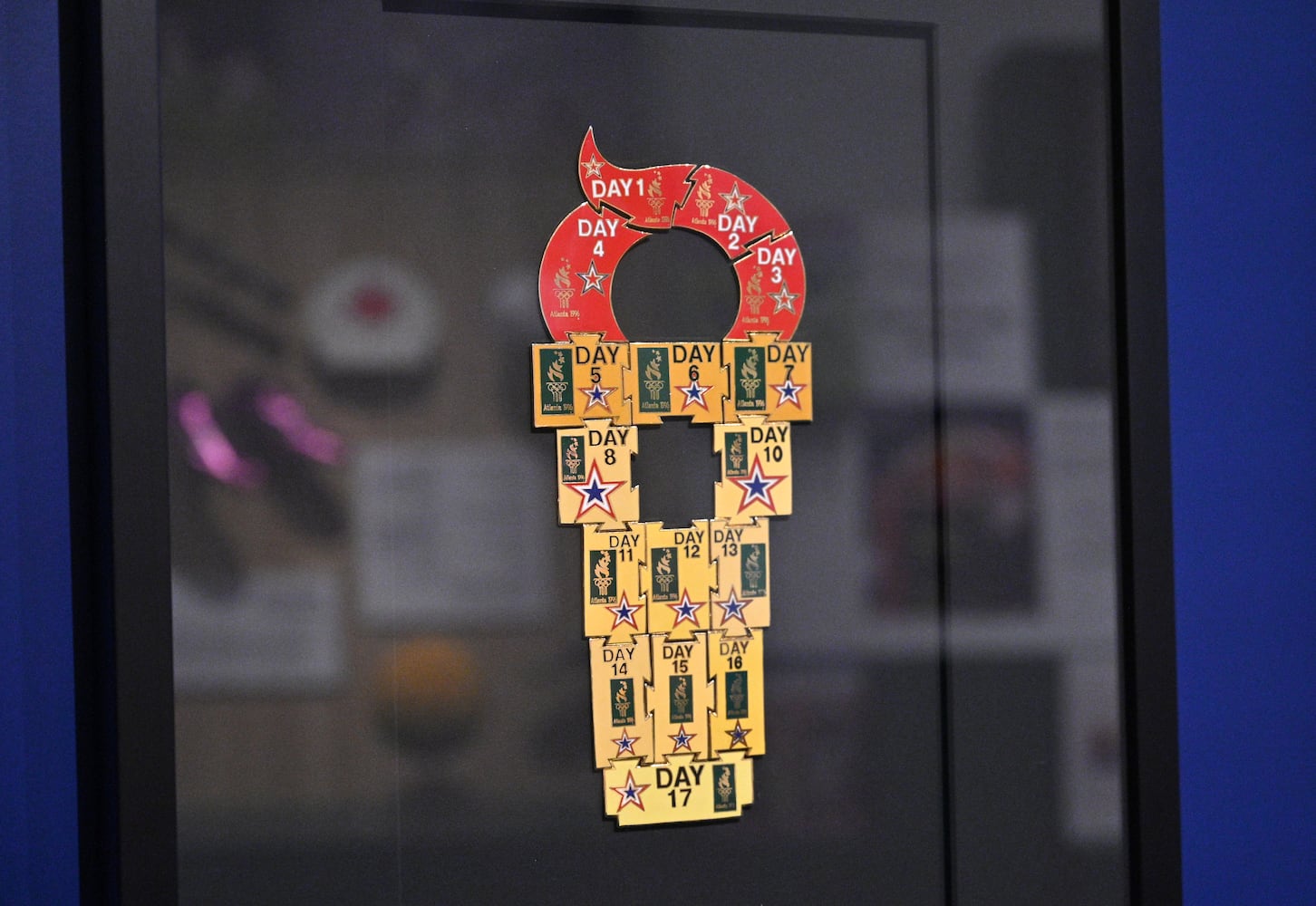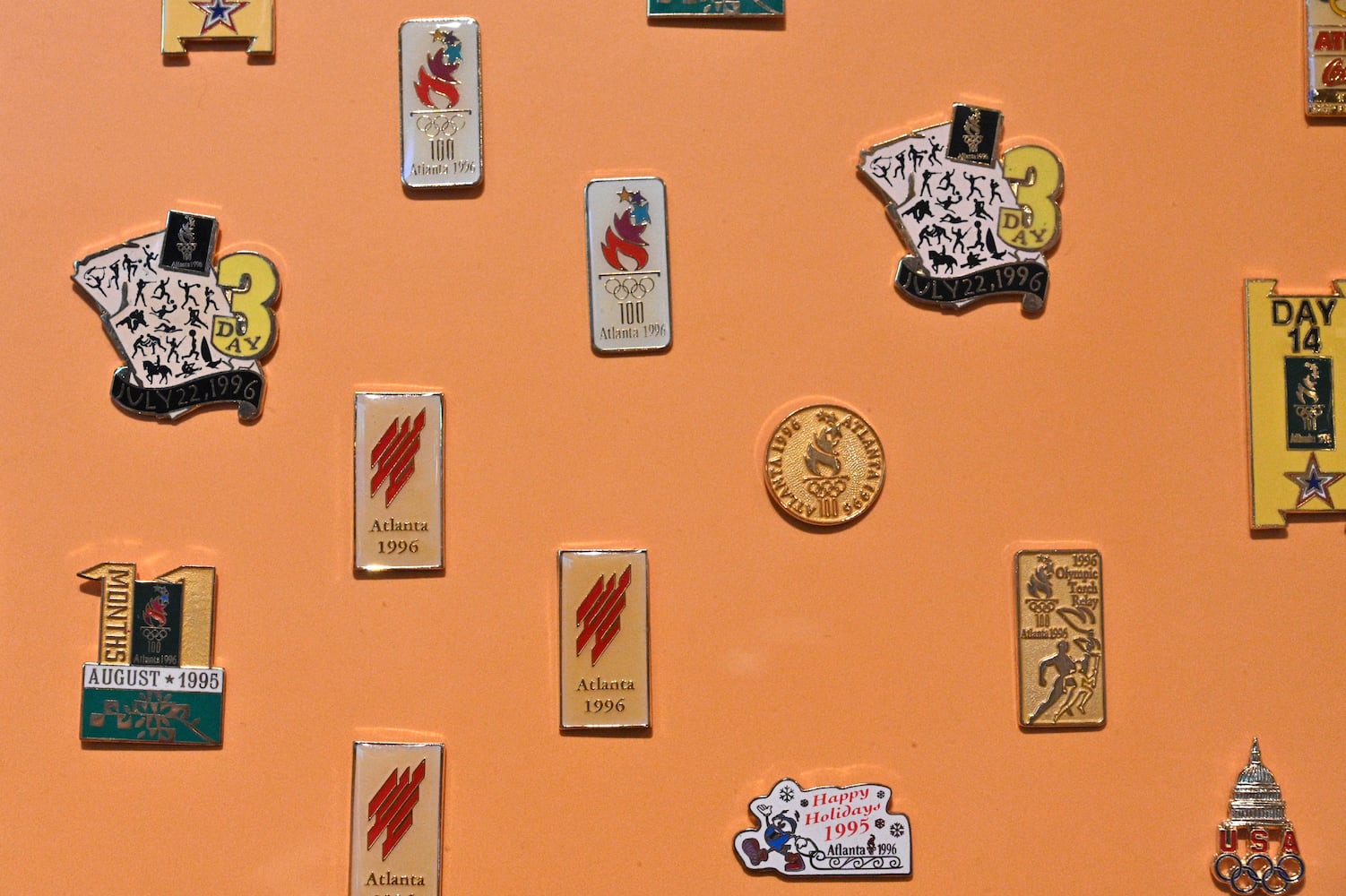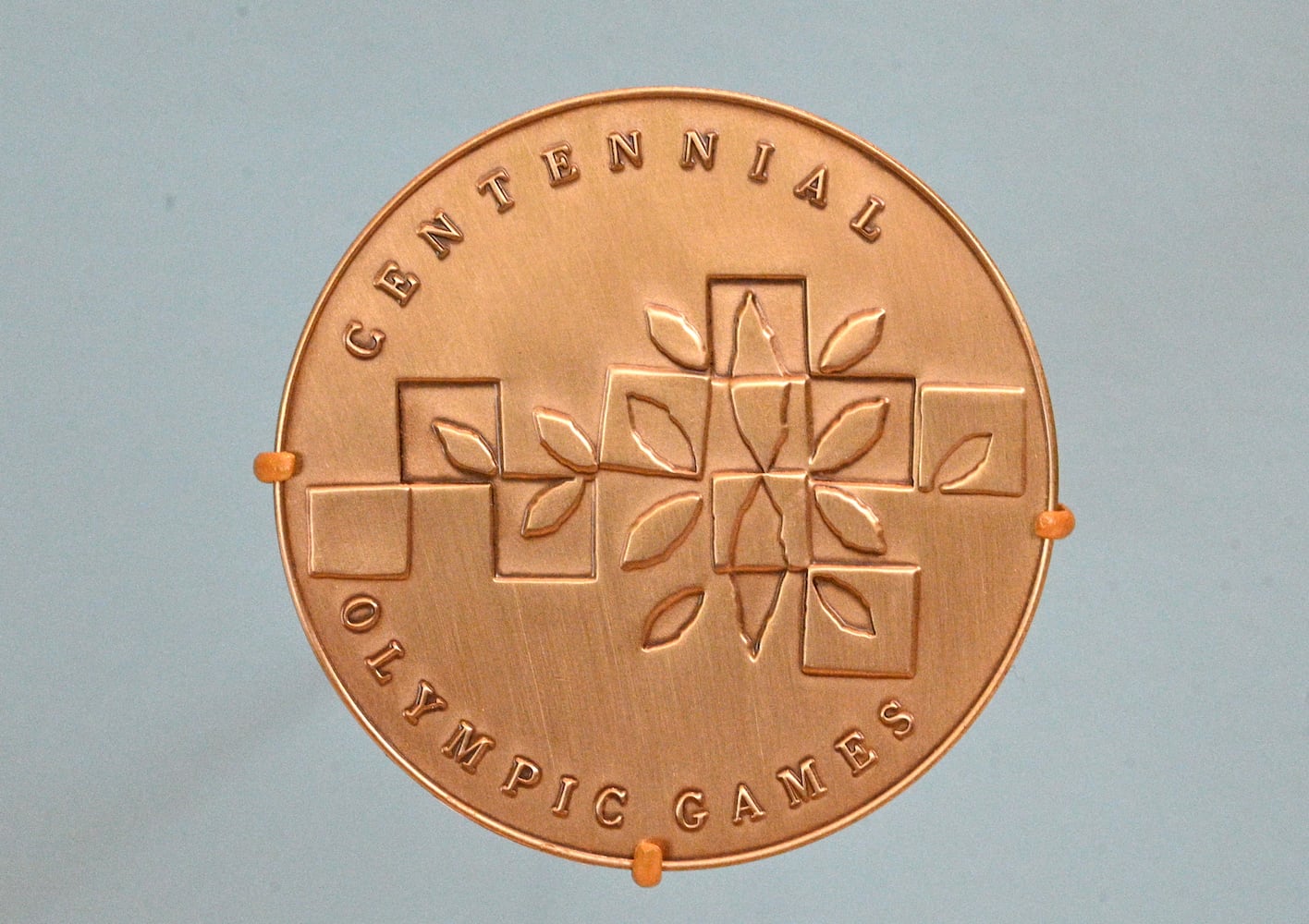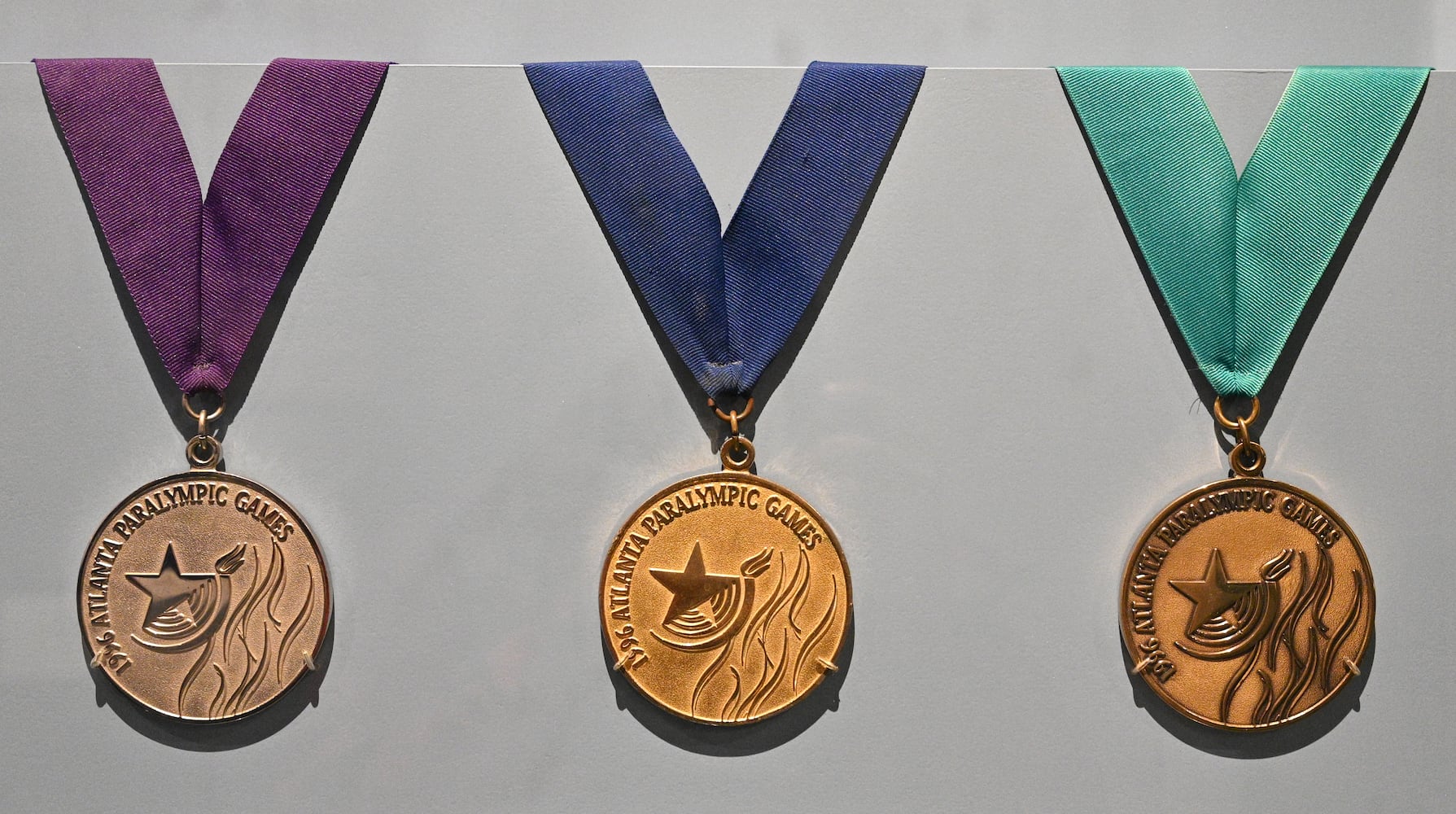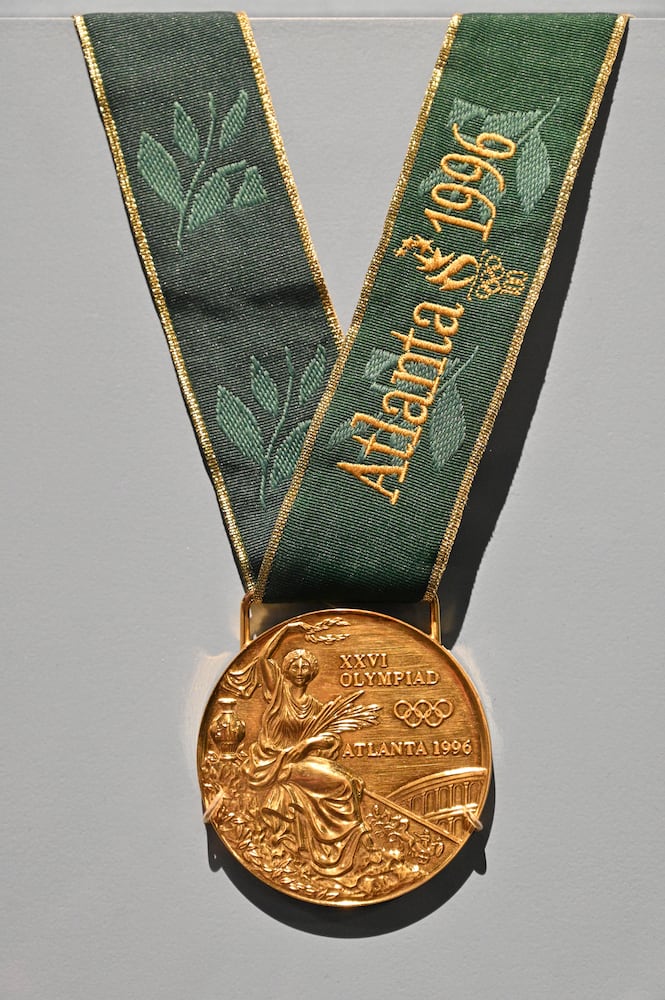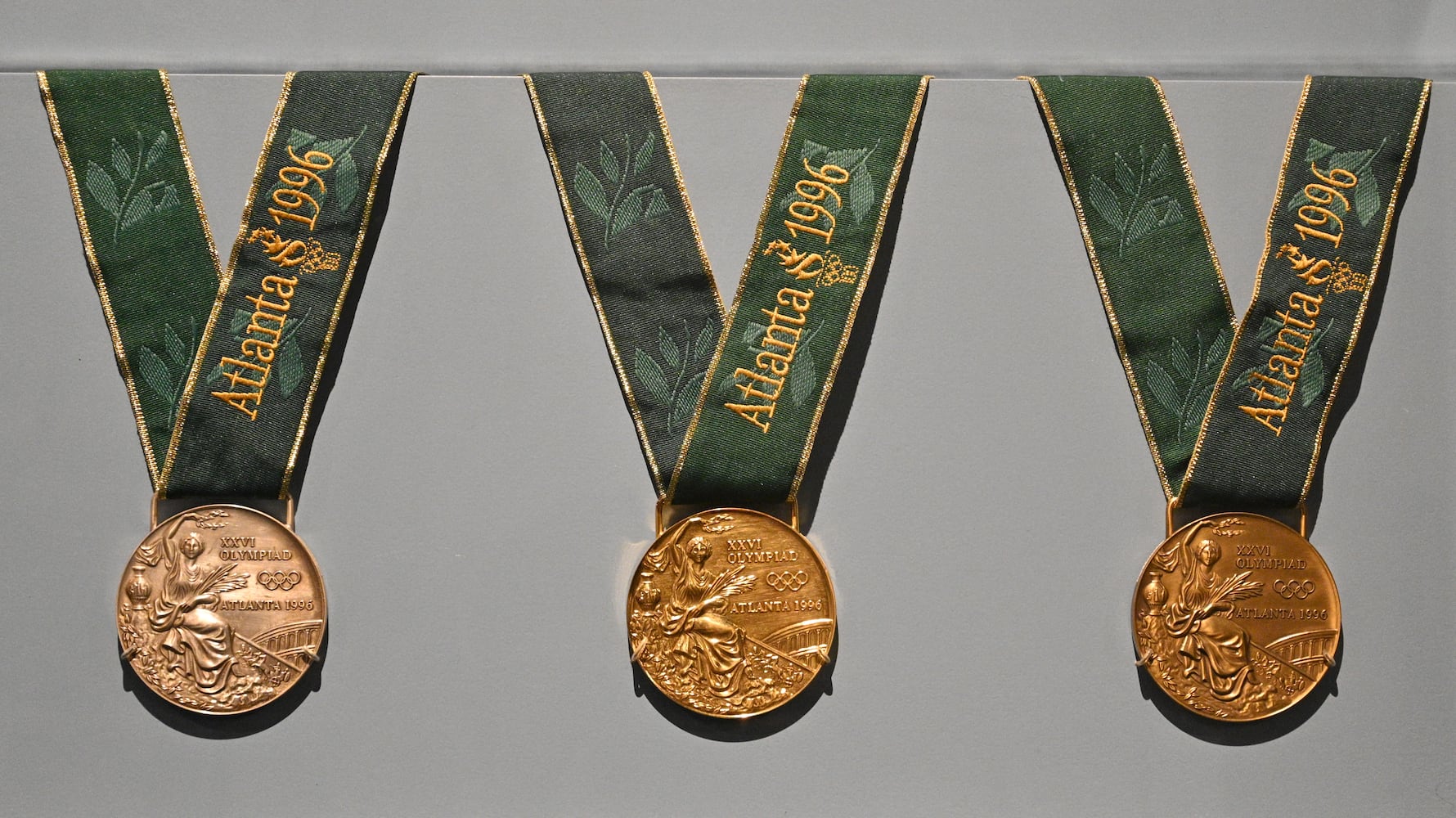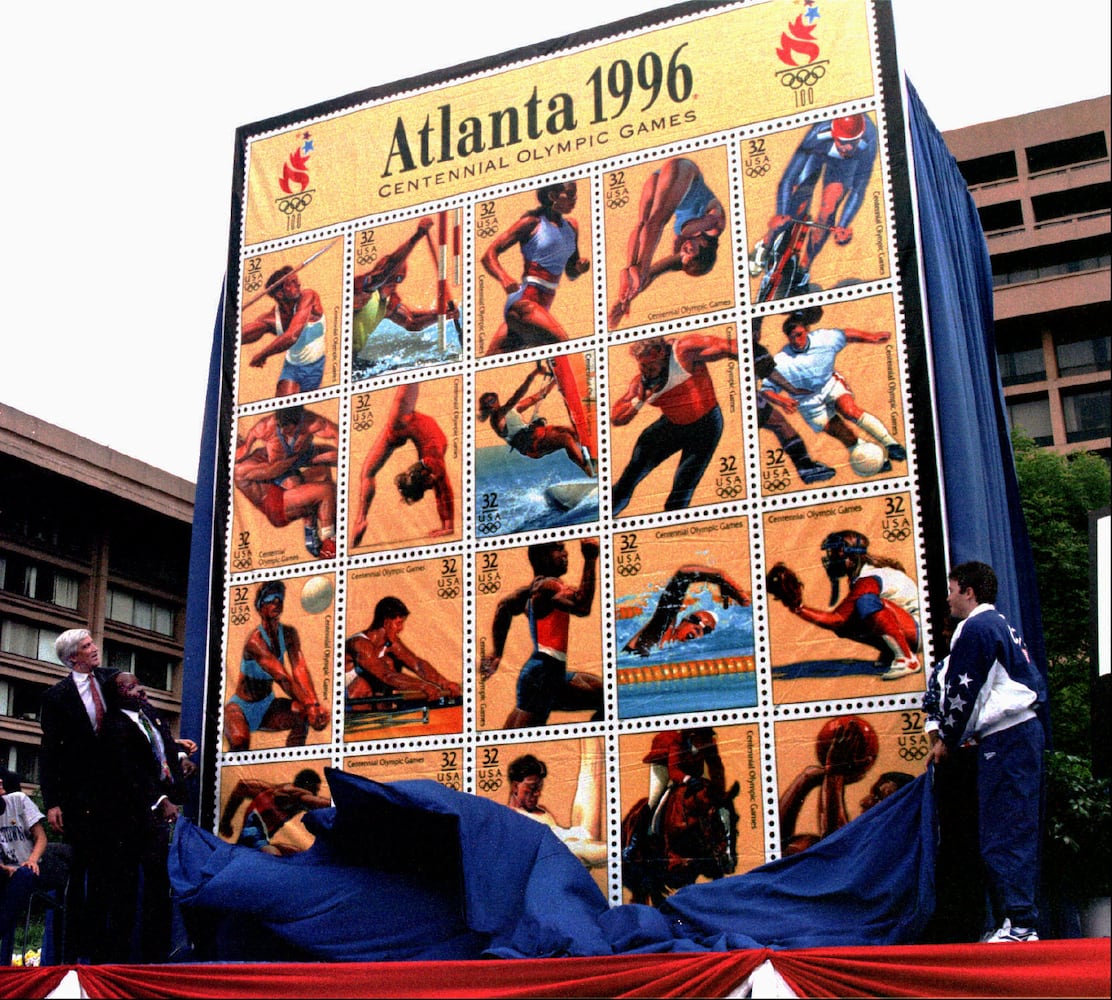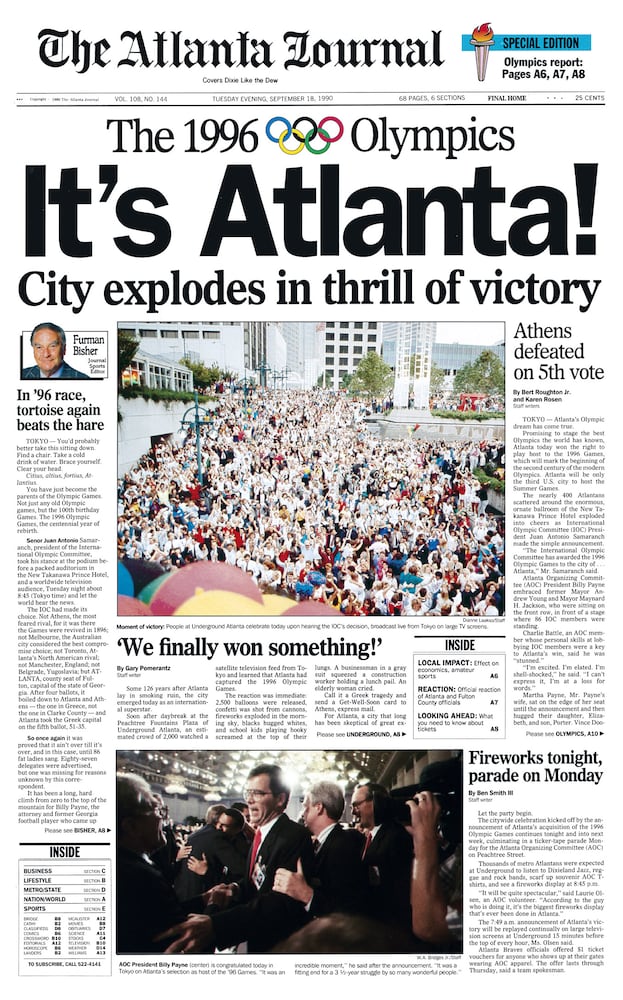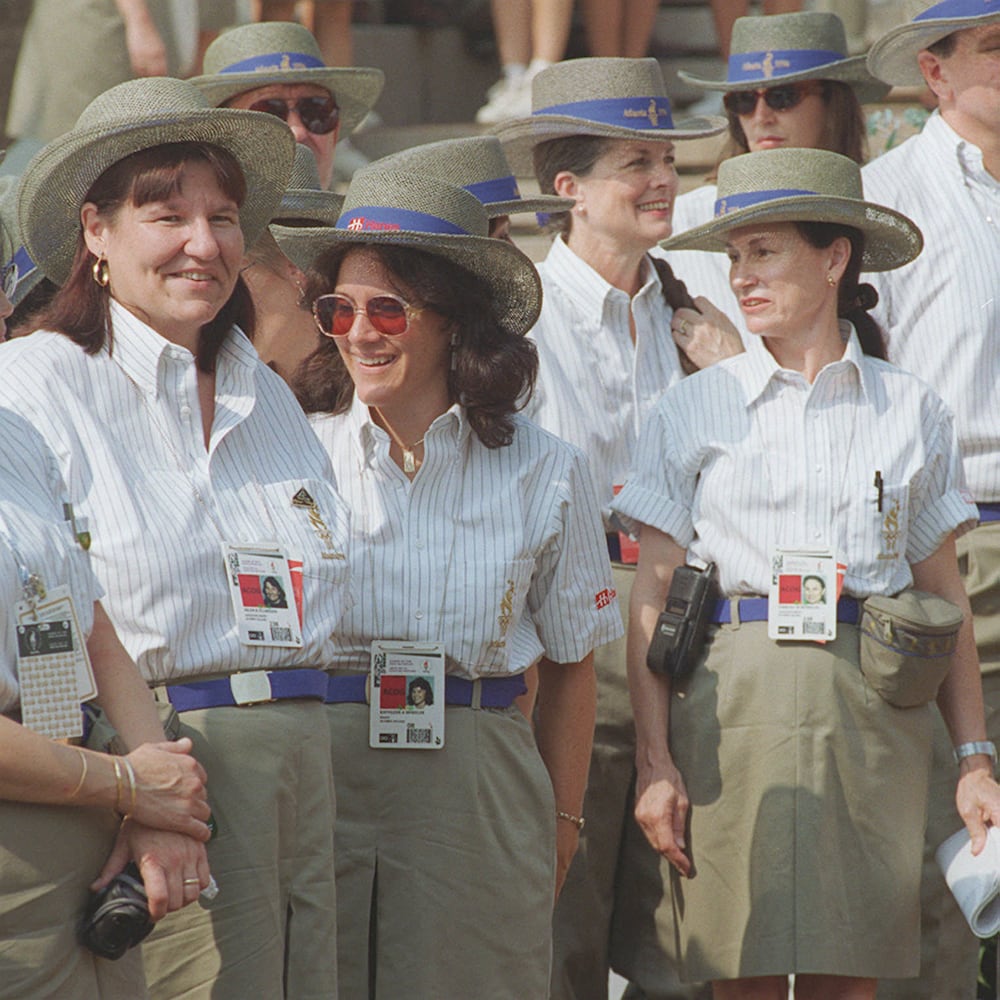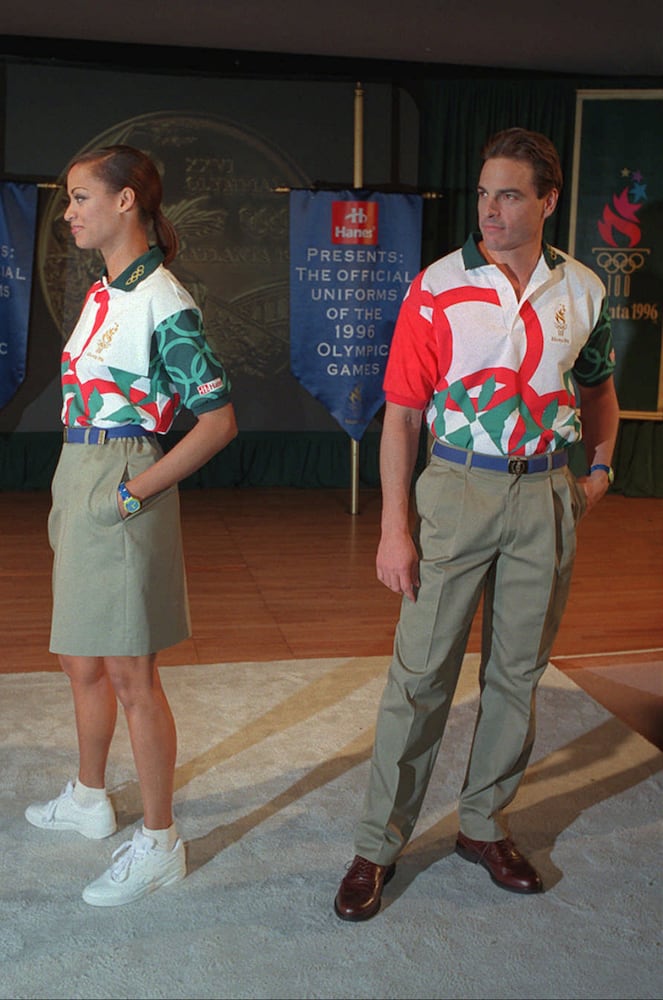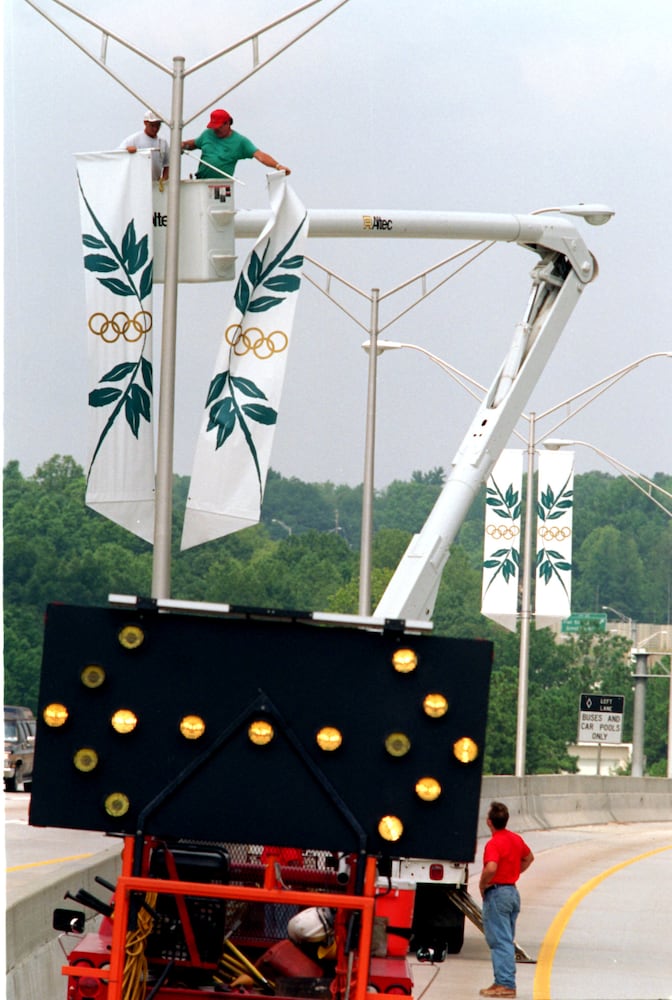A quarter century ago, Atlanta’s Olympic fever spawned a cottage industry of tchotchkes.
Three hundred million yellow stamps. Sixteen varieties of federal commemorative coins. Some 100 million enamel pins. And that’s not counting the sea of beach towels, toothpick holders and dinnerware paying homage to Izzy, the alternately mocked and beloved electric blue mascot of the 1996 Games.
Whatwazit all for, exactly?
Much of it is still out there somewhere, and not all of it is stashed inside long-forgotten boxes at the back of closets. But for Atlantans hoping their 1996 memorabilia might be worth gold, and not just warm and fuzzy feelings, most are likely to be disappointed.
Unless it’s a rare item or directly connected to a beloved athlete, it’s unlikely to rake in big money now and maybe never, auctioneers and other sports memorabilia experts say.
“There were so many items made in such numbers that most will never appreciate much in value,” said Ingrid O’Neil, a longtime Olympic memorabilia dealer. “You can still find them easily.”
A quick perusal of eBay, Etsy or your average metro Atlanta estate sale yields gobs of 25-year-old Atlanta programs, posters, T-shirts and branded advertising pieces from companies like Coca-Cola and Budweiser.
One of the largest collections is currently on display at the Atlanta History Center. An exhibit includes everything from a prototype of Atlanta’s bid book to the International Olympic Committee to a pinstripe suit-wearing Cabbage Patch doll depicting one of the city’s Olympic boosters. Thousands of other mementos are stored in the back.
Credit: HYOSUB SHIN / AJC
Credit: HYOSUB SHIN / AJC
Biggest draws
It’s not all knickknacks.
Among more moneyed collectors, certain ’96 Olympic memorabilia can fetch five-figure price tags.
Medals are always considered winners. Beyond the gold, silver and bronze awarded to dominant athletes are so-called participation medals that every Olympian receives. Those can sell for about $200 a pop at auction.
James Smith, a sports memorabilia specialist at the Chicago-based auction house Hindman, said a gold medal from the Atlanta Games tends to pull in $20,000 to $30,000 at auction. Those awarded to famous athletes can attract even higher amounts, though they are rare.
Credit: HYOSUB SHIN / AJC
Credit: HYOSUB SHIN / AJC
The same holds true for pretty much anything associated with a major competitor’s Olympic performance.
A pair of golden, feather-light Nike track shoes worn by star sprinter Michael Johnson, who broke records while capturing the gold in the 200- and 400-meter dashes in 1996, sold for $6,000 at auction in 2012.
Smith said he’s seen fan-purchased basketballs signed by members of the 1996 U.S. men’s basketball team, nicknamed the Dream Team III, sell for $500.
But nothing touches what “The People’s Champion” can command.
One of the most surprising moments from the Games, when Muhammad Ali lit the Olympic cauldron, his arm quivering from Parkinson’s disease, is still considered one of the most iconic in sports history. Anything connected almost inevitably draws big bucks.
Credit: Andy Clark/Reuters file photo
Credit: Andy Clark/Reuters file photo
Organizers produced an estimated 17,000 Olympic torches made of aluminum and Georgia pecan wood for the torch relay that year. Those tend to sell for about $1,500 at auction these days, but any with Ali’s signature have been known to rake in three to 10 times that. (Though some collectors have claimed to possess the actual torch Ali used to light the cauldron, the Muhammad Ali Center in Louisville, Ky., says it houses the original.)
“Anyone who remembers those Games can close their eyes and picture that exact image,” said Kendall Capps, a sports specialist at Julien’s Auctions, explaining the appeal of such items. “It’s etched in everyone’s minds.”
Credit: HYOSUB SHIN / AJC
Credit: HYOSUB SHIN / AJC
Pin trades continue
There are still collectors and traders who enjoy indulging in the nostalgia of the ’96 Games through smaller-dollar trinkets.
Until the pandemic, several dozen would congregate monthly in a back room at The Varsity to buy, sell and trade pins from the event. The Midtown restaurant became an unofficial trading post during the Games due to its proximity to the athlete’s village, and the pin-heads who returned month after month found community as much as they did additions to their collections.
One of the organizers of the gatherings, still on hold because of COVID-19, is Scott Reed. The Lilburn banker delved into the pin-trading world when he arrived at the 1996 Games toting a bag of 50 pins from his employer. He figured he’d trade the bunch for 10 other pins and be on his way. He was pleasantly surprised when he returned home with 50 new pins.
A lifelong hobby was born and he estimates he now owns thousands. Among his favorites: a pin he received from South African swimmer Penny Heyns minutes after she won gold at the Olympic pool.
“It’s a great way to meet people,” said Reed, who’s since attended four other Olympic Games. “You can walk up to anybody, and if you have a pin you can start a conversation.”
Credit: Hyosub Shin
Credit: Hyosub Shin
The value of most pins depends on the collector. Some seek out the pins that each participating country distributes to athletes for each Games. Others gravitate to those tied to sporting events like equestrian or track or those issued by media outlets such as NBC.
But overall, the rarer the more prized. Nicholas Wolaver, an Atlanta-based public relations executive and Olympics enthusiast, spent years hunting for a brooch-like pin of five golden letter As arranged in a circle that the women of the Atlanta Committee for the Olympic Games wore. He paid $350 for one last year.
One of the most famous rarities is a Varsity-issued “what’ll-ya-have?” pin featuring a box of onion rings. The pin was removed from circulation after Olympic Committee officials said the fried rings too closely resembled the Olympic rings. Two of the contraband trinkets sold for around $200 a pop in 2020.
Credit: Hyosub Shin
Credit: Hyosub Shin
The vast majority of pins, however, sell for pennies.
It’s unclear how many will circulate from this summer’s Tokyo Olympics since pin collectors — and all spectators — are banned from the festivities.
And there’s a broader fear among Olympics enthusiasts and auctioneers about waning interest in collecting among younger generations who store their memories on their smartphones or the cloud. Another emerging rival for old-school collectibles: NFTs, or non-fungible tokens, which track digital ownership of everything from music to memes. A few NFTs have begun to infiltrate the pin-trading world, but they’ve not taken off yet.
Meanwhile, the commemorative stamps the U.S. Postal Service issued for the 1996 Games haven’t appreciated. A sheet of 20 can be purchased on eBay for $6.40 — the stamps’ face value.
Credit: HYOSUB SHIN / AJC
Credit: HYOSUB SHIN / AJC
One other piece of Olympics memorabilia that is still a tough sell: Izzy.
O’Neil is gearing up for her 90th auction of Olympic memorabilia this fall. Often included in her lots are plush dolls of Olympic mascots. Even 25 years later, a common question she hears from collectors when they see the Atlanta mascot is “what in the world is this?”
“I hear that all the time,” she said with a laugh.
About the Author
Keep Reading
The Latest
Featured
